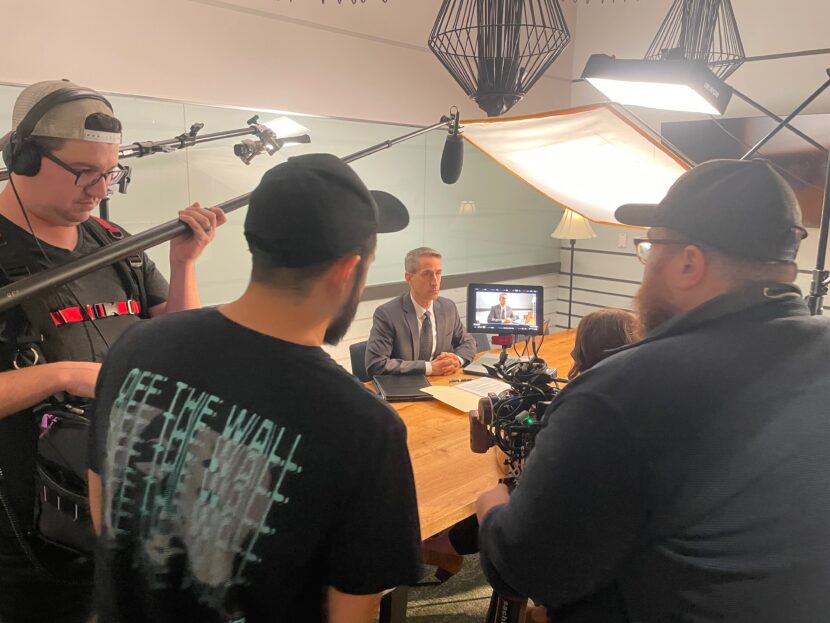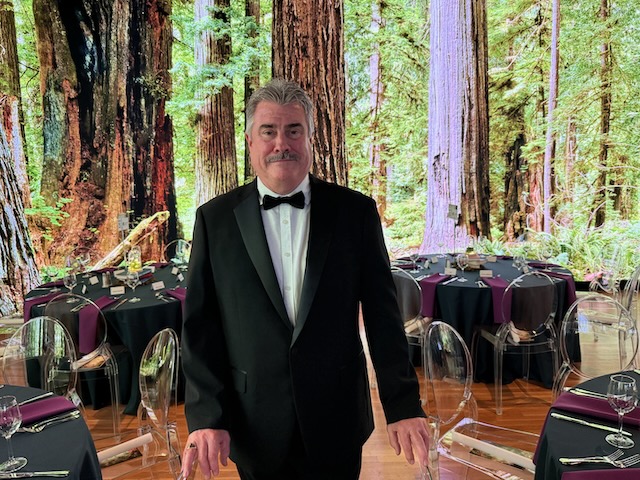The Crucial Role of Lighting in Video Production
Lighting in video production can make or break the effectiveness of a corporate film. In this article, we will explore five ways where lighting makes your company’s video more compelling and cinematic.
Why is lighting in video production so important?
Lighting in video production is a significant component to a film’s success. Let’s try a thought experiment. Imagine you take a photo of yourself right at sunrise. The sun is softly lighting the sky, the clouds are pinkish-blue, and your face has almost no hard shadows on it. For many this is an ideal time of day for soft flattering photography. Then let’s take the exact same photo in the early afternoon. The sun is high in the sky, almost directly above you. The sky is incredibly blue, and the sun is creating bright direct light. Your face is now covered in hard shadows created by your nose, forehead, hair, etc. The only way to take the photo is to either expose for the bright sky which in turn will make your shadows even more dark OR you expose for the shadows which will make any bright spot in the photo peak, meaning it turns almost completely white.
If you were to look at these two moments without a camera, it wouldn’t look as dramatic. That’s because our eyes have incredible dynamic range to see both deep shadows and bright lights. Cameras have a limited dynamic range comparatively, so when we light, we account for all variables. This basic example shows how lighting can be used to enhance an image.
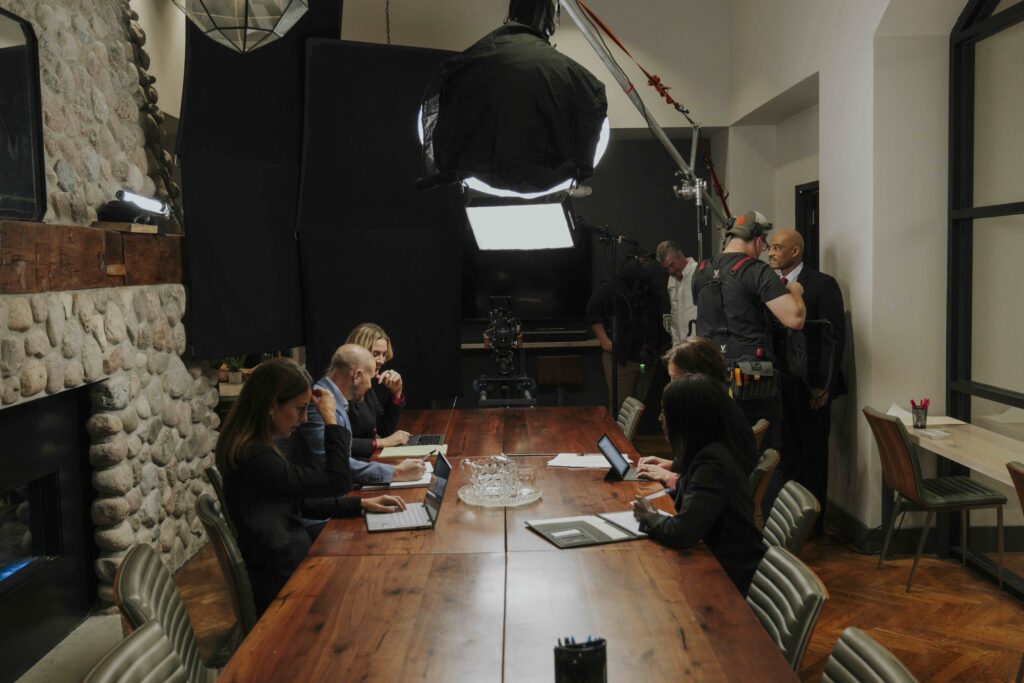
When we create our lighting setups, we consider all the lighting variables so that we can make a cinematic image. Are there overhead ceiling lights? Are they harsh? Many locations use tiny can lights, that in turn create unpleasant shadows. Are the lights tinted green or magenta? Lots of lighting in office buildings use fluorescent bulbs which can result in unwanted green or pink color cast. Where are the windows? At what time of day does the sunlight shine through the windows? Often, we find the natural lighting of these settings need a little work. We take all these variables into account, remove the unpleasant lighting variables and then implement our own cinematic lighting.
The key to creating beautiful imagery is first remembering that photography is a 2-dimensional art form. Great lighting, cameras and lensing can make a 2-dimensional image look 3 dimensional. Many times, the DP (director of photography) will implement a series of lights to accentuate the part of the image that they want the viewer to focus on. In commercial corporate films this is often an interviewee or an employee working in their respective environments. First the lighting team will use a large soft key light to create pleasing light with very soft shadows on the face of the subject matter. They work carefully with the camera and lighting settings to ensure this is the brightest part of the image to help focus the audience’s attention. Next a backlight will be used to create a rim of light to separate the subject from the background. We don’t want the subject to blend in with the background, so we utilize a “kicker” or backlight to make sure the edge of the subject doesn’t mix in with the background elements of the image. We also use negative fill, a black fabric to soak up light in order to create contrast and dimensionality. Images look a great deal more pleasing when there is a mixture of light and dark areas to help focus the attention of the audience. A catchlight is setup for providing a nice shine to the eyes of the subject because we want to prevent eyes from looking lifeless. Lastly, room lights will be added to the illuminate portions of the background or to highlight specific elements in the environment.
How does lighting in video production affect the emotional tone of a corporate film?
In order to understand the emotional aspect of lighting, we must talk about the color of light (color temperatures). Lighting fixtures can produce different colors of light that are measured in degrees of Kelvin. The lighting of the traditional incandescent bulbs used in lamps has a warm yellowish glow and ranges between 2,800 degrees Kelvin and 3,200 degrees Kelvin. We abbreviate this as 2800K or 3200K. The sun at sunrise or sunset also has that same warm and yellowish glow (between 2800K & 3200K). This is why filmmakers want to film the emotional moments outside at what we call “golden hour.” The golden color of the sun, just a bit above the horizon, creates those magic movie moments on the screen. If there are scenes in your corporate film that are to be filmed outside, your director and DP will want them filmed a golden hour.
Let’s contrast this with the sun at high noon. The temperature of the sun when it is high in the sky is between 5600K and even 10000K (depending on how close one is to the equator or how cloudy it is). This produces a light that is bluer to the camera. When natural light shines through a window (but not directly on the face) it creates a wonderfully diffused light, and this light is cheerful and uplifting. Lots of time this soft window light is what the key light is trying to mimic. In contrast, the light of an incandescent light bulb is warmer producing a light quality that is moody and cozy.

All light temperatures bring a certain emotional feel to the film. In a corporate video that takes place inside a building in a large space with windows, DPs tend to prefer daylight (around 5600K). Having a subject near a window is always a good start and filmmakers will reinforce the natural light with 5600k lighting. In an interior nighttime space, we want the warm feeling of the incandescent lamps. If we are filming in an office with no windows, DP’s may opt for a warm color temperature of an incandescent light, motivated by a nearby lamp. Of course, there are many light temperatures between daylight and lamp light. In some corporate spaces, where there are large and new LED lights in the ceiling, DPs tend to light at a color temperature between 4000K to 5000k. That is the temperature of the ceiling lights, it is neutral, looks good on camera and we can more easily color grade the lighting temperature in post if needed.
The enemy of all cinematic lighting is the old florescent lights that are either very green or orange that flicker. DP’s will either block those light sources and relight the scene entirely with their own lights or they will adjust the camera’s filming temperature to suppress the green and orange light colors.
Cinematic lighting is truly an art form. The psychology involved in lighting makes a film compelling and engaging and it is a crucial component to shaping the emotional tone of the film.
Who is in charge of lighting when filming a corporate video?
All of these lights will have to be moved and setup for each individual shot of a film, and this is why a lighting team is so important. A Director of Photography has many people to help implement the vision of the Director. A Gaffer is the head electrician on set who is in charge of placing and altering the light fixtures for each setup. DPs entrust gaffers to make sure the lights are in the right places, with the right types of modifiers at the right levels. Many times, gaffers will have all of the lights on a wireless transmitter so levels can be dialed in with the DP behind the monitor after they are in the right places. A Gaffer will usually have a team of “grips” working for them as crew members to help setup additional stands and lights. This ensures that the film team doesn’t spend all the shoot time in the setup. The more setups that are required in a day, the more team members are required in order to ensure the team stays on schedule.

Why does lighting take so much set up time in a corporate video?
There is a great deal of equipment involved in lighting a scene. Each light is mounted in different ways. They may be mounted to heavy metal stands called “c-stands” or “Junior stands”. These stands can sometimes be outfitted with boom arms that support the weight, angle and height of the light. A light may be mounted to the ceiling or cross bars that hang under the ceiling. It takes time to mount cross bars or other gear to the ceiling and then mount the lights to such equipment. Some lights, mounted on a c-stand may be cast into the ceiling to raise the ambient level of the room light, aka, brighten the overall lighting.
Most of the time, a DP does not want hard direct light shining upon the talent and chooses to soften the lighting so that it is not harsh or obvious. Direct or hard light creates obvious shadows that draw attention away from the subject and make the scene look unpleasant. To avoid this, lights are diffused with different fabrics in order to soften them and prevent obvious shadows. There are all kinds and shapes to the mechanisms that diffuse light in film. Softboxes may be mounted to the front of the light or large square frames that hold fabric of various sizes and densities may be used to diffuse the lights. In corporate cinematography the goal of lighting is to not draw attention to itself, so the audience feels that everything is natural and beautiful.
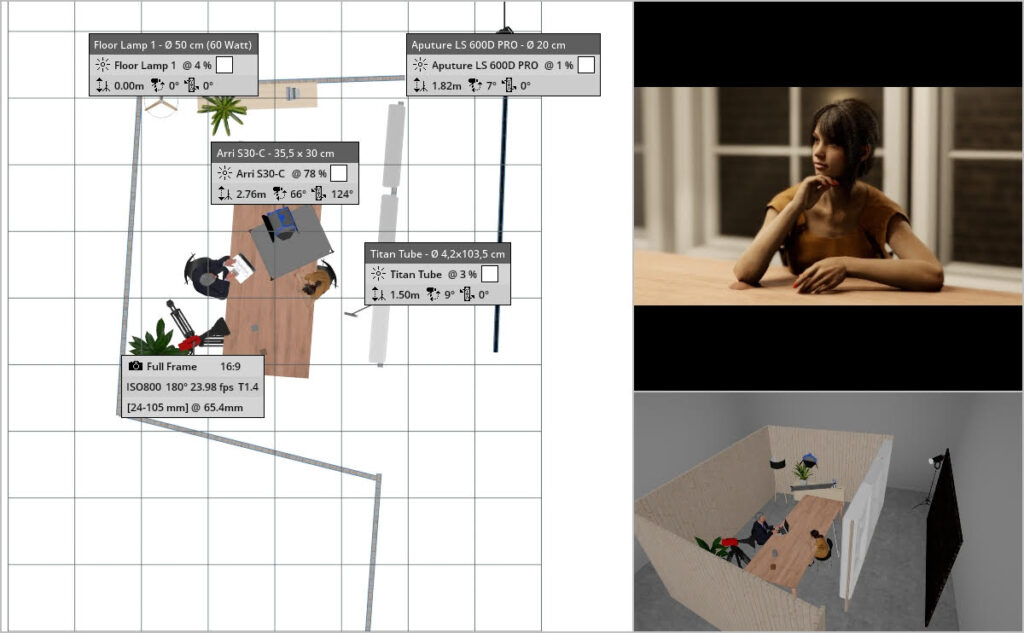
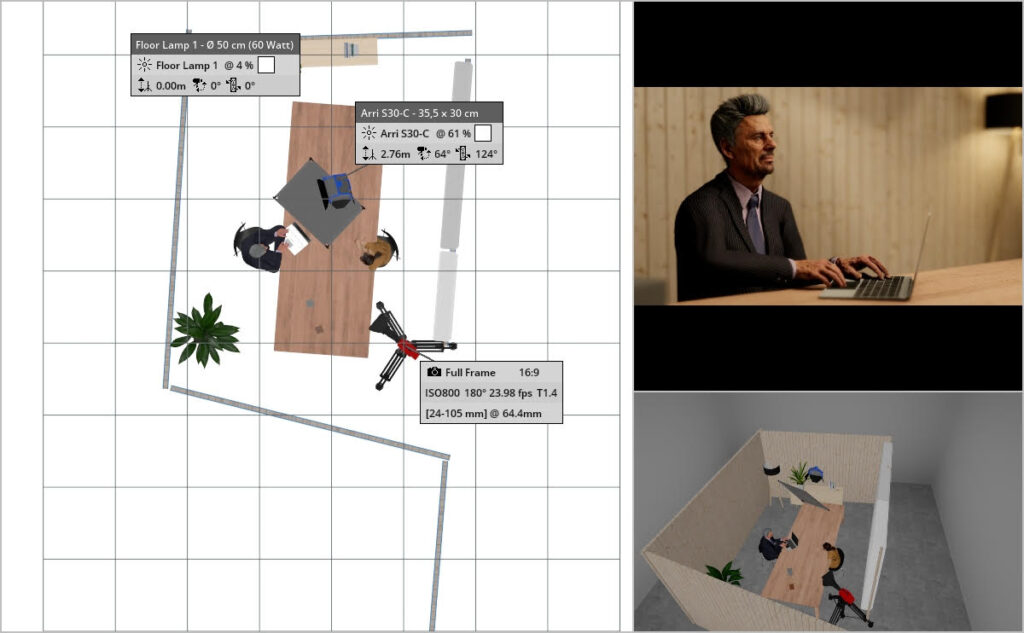
What does lighting in video production accomplish?
Artistically crafted lighting brings the colors of people, clothing and objects in the room to vibrant life. It also creates contrast and gives definition. Additionally, light directs the audience’s attention to what the filmmaker wants them to focus on.
As was noted above, light dictates the mood of the scene. Corporate commercials are often bright and poppy with light, but many TV dramas and movies prefer darker spaces with minimal lighting to create a somber mood. That being said, these dramas and movies are still using lighting, just for a different purposes and effect.
The difference between a corporate video that is well lit versus one that is not lit is profound from both a visual and emotional standpoint. As an example, think of a room in your house, such as a bedroom and family room. If the room is only lit by an old ceiling fixture, the space will feel uncomfortable, grey and lifeless. However, if you turn on the lamps in the room and turn off the overheard light, the room feels warm, cozy and inviting. The same applies to corporate videos but the effect is even more amplified on the screen.


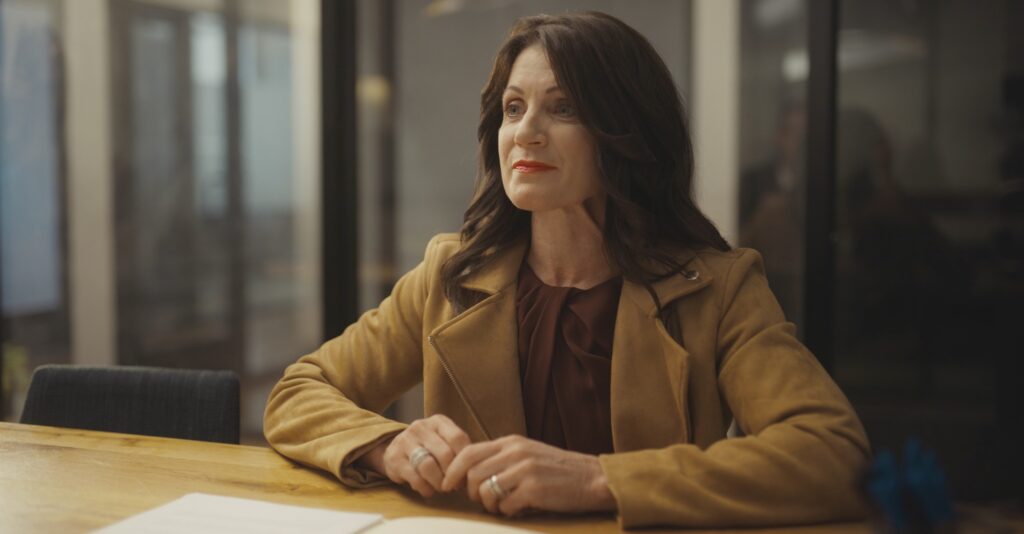
Occasionally, a client may ask if the cost would be cheaper if the video was filmed without cinematic lighting. The answer would be yes, but your film will lack all the benefits of having lighting. Overall, the film may feel lifeless and less professional.
The time, expertise and expense of great lighting is crucial to making your corporate video emotionally engaging and effective. It takes your video from something recorded by an amateur to something filmed in a truly professional fashion by a high-end video production company. This establishes your brand or company as reputable and adds to your credibility. If you are working with a lower budget, talk to the producer of the video production company you are working with. There are many ways to scale back the expenses of a video in ways that don’t threaten the quality of your company’s film.
At Barking Squirrel Media, we take great pride in the quality of lighting in our films. If you’re interested in how we can elevate the lighting in your next corporate film, contact us today.

